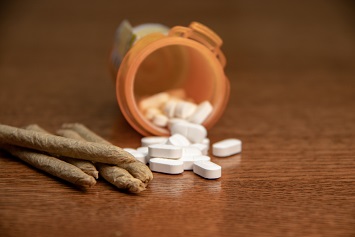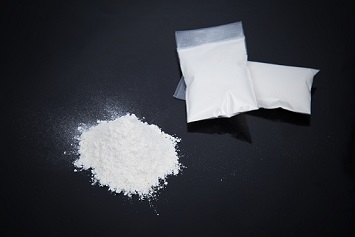The use and misuse of both illicit and prescription drugs are affecting a growing number of employers. Whether marijuana or opiates are obtained legally or illegally, both are present in the workplace. An increasing number of workers are even dying on the job from drug and alcohol overdoses. The most acute hazards are faced by firefighters, police officers, and other emergency responders, as well as cleanup workers.
These issues have been fueled by a number of developments:
- Several states have enacted laws allowing recreational use of marijuana in addition to existing laws recognizing medical uses of marijuana,
- Physicians have prescribed opioid painkillers for work-related and non-work-related injuries, and
- As some individuals became dependent on or misused these prescription painkillers, they switched to illicit opioids.
These have led to four key problems:
- Health and safety hazards in the growing, processing, and retail sale of marijuana,
- Worker impairment from marijuana and opioid use,
- Overdoses and deaths in the workplace, and
- Health hazards faced by emergency responders and law enforcement officers encountering synthetic opioids like fentanyl.
Marijuana Use Growing
Marijuana was the most commonly detected substance in worker drug tests, according to Quest Diagnostics, a company that tests workers’ urine samples for employers and performs patient blood, urine, and other diagnostic tests for healthcare providers. Quest reported that positive results for marijuana increased by more than 33% between 2015 and 2017.
Some users fail to exercise caution surrounding their marijuana use.
Over half of medical marijuana users reported driving while “a little high,” according to University of Michigan researchers. They found that 56% of the users surveyed reported driving within 2 hours after using marijuana, 51% reported driving while “a little high,” and 21% reported driving while “very high.”
With more states enacting laws approving medical or recreational marijuana use, an industry has quickly expanded to meet consumer demand. The American Industrial Hygiene Association (AIHA) voiced several concerns about the cannabis industry in its recent public policy agenda, including:
- Worker impairment due to marijuana use;
- Health and safety hazards posed by the growing, processing, and retail sale of marijuana and the need to reach out to the industry to implement hazard controls; and
- The need for research into identifying and characterizing worker impairment, as well as a voluntary prohibition of marijuana use by workers in safety-sensitive positions until impairment caused by marijuana use is better understood.
Steep Learning Curve for an Emerging Industry
Participants in the emerging cannabis industry may be unprepared for and ill-equipped to handle the health and safety hazards involved with the growing, processing, and retail sale of marijuana.
The California Division of Occupational Safety and Health (Cal/OSHA) recently cited a marijuana processing company for a workplace explosion in which an employee suffered burns. When the employee was using propane to extract cannabis oil from leaves, the propane ignited, causing an explosion.
The National Institute for Occupational Safety and Health (NIOSH) has published two Health Hazard Evaluation reports following investigations at cannabis industry facilities.
At an outdoor organic farm where marijuana is harvested and processed, NIOSH reported finding that:
- Tetrahydrocannabinol (THC) was present in every surface wipe sample; and
- Some hand-trimming activities required a lot of hand motions, and employees were concerned about repetitive-motion injuries.
Investigators recommended the employer rotate workers to reduce the duration of repetitive hand motions and wipe work surfaces to remove THC. At a medical marijuana processing facility, NIOSH researchers had a longer list of suggestions for the employer. They suggested that the employer:
- Install local exhaust ventilation to reduce exposures during grinding operations;
- Move the decarboxylation process (to extract cannabinoids) to a seldom-occupied area in the facility to prevent unnecessary exposures to potentially hazardous substances;
- Limit access to the areas where higher-exposure tasks are occurring;
- Redesign security doors to allow emergency egress without needing a badge to exit the facility; and
- Develop and implement a written respiratory protection program that meets the requirements of OSHA’s respiratory protection standard.
Overdoses on the Job
Overdoses and even overdose deaths are becoming increasingly common occurrences in the workplace.
The Labor Department’s Bureau of Labor Statistics (BLS) reported that the number of fatal overdoses has increased by at least 25% for 5 straight years. The number of overdoses has been rising since 2012:
- From 65 in 2012 to 82 in 2013,
- To 114 in 2014,
- To 165 in 2015, and
- To 217 in 2016 and 272 in 2017.
The 272 drug and alcohol overdoses accounted for 5.3% of all fatal injuries in 2017.
Quest Diagnostics noted a spike in positive results for opiates. Quest has performed over 10 million worker drug screens over a 3-year period, from 2015 through 2017, and found the highest rate of positive results for opioids in the following industry sectors:
- Health and social assistance, .47%;
- Public administration, .47%;
- Construction, .34%;
- Manufacturing, .33%; and
- Accommodation and food services, .31%.
NSC Surveyed Employers
A National Safety Council (NSC) survey found most employers are unprepared to cope with opioids and especially prescription opioids in the workplaces.
The NSC found that:
- More than 70% of employers are affected by prescription drugs in the workplace;
- 76% do not offer training to identify the signs of misuse;
- 81% lack a comprehensive drug-free workplace policy; and
- 41% of those that test employees for drugs do not test for synthetic opioids.
The standard five-panel drug test checks for amphetamines, cocaine, heroin, marijuana, and phencyclidine (PCP). It does not screen for dilaudid, fentanyl, hydrocodone, or oxycodone.
Opioids include:
- Natural opioids, such as morphine and codeine, derived from the opium poppy;
- Semi-synthetic opioids, including illicit heroin and the prescription drugs hydrocodone and oxycodone; and
- Synthetic opioids, such as methadone, tramadol, and fentanyl.
The NSC went on to develop a set of recommendations for employers specific to responding to prescription opioids in the workplace. The group first recommended that employers reevaluate their drug-free workplace policy and drug testing program. The NSC said an effective drug-free workplace policy consists of five components:
- A clear, written policy;
- Employee education;
- Supervisor training;
- An employee assistance program (EAP); and
- Drug testing.
The policy should clearly state that prescription drugs should be taken in the standard dosage according to a physician’s instructions. The NSC also suggests that employees share their job description with the prescribing physician to determine whether a prescribed medication would interfere with the employees’ assigned duties. The employees also should ask whether a non-opioid medication could be prescribed for pain.
Supervisors should be trained to recognize typical behavioral and performance-related signs of impairment.
An employer-sponsored EAP can be a cost-effective way to address prescription painkiller dependence or addiction. However, the NSC noted that while many companies offer EAPs, few employees use them. Employees can often fear a stigma or negative ramifications resulting from using their employer’s EAP. The NSC suggested that employers educate their employees in the value of their EAP.
The NSC also suggested that Prescription Benefit Managers (PBMs) have technology that can help stop prescription painkiller misuse. The council suggests employers ask the following when evaluating PBMs:
- Does the PBM provide information about total opioid drug spending and trends?
- Does your PBM have a flag for repeated attempts for “too early refills” that would potentially show noncompliance with the prescriber’s recommendation?
- Are dose levels flagged, including morphine equivalents exceeding 120 milligrams per day?
- If the “duration of therapy” limit is flagged, what is the process when an opioid prescription has been changed during the course of treatment?
- Is there a system flag when opioids are combined with other drugs, especially in combination with sedative benzodiazepines (like Valium and Xanax)?
- Does the system show if an employee is seeing multiple physicians who prescribe the same or similar prescription opioid painkillers?
Employer Naloxone Programs
Because overdoses, even fatal ones, are occurring on the job, NIOSH has recommended that employers consider having Naloxone on hand in the workplace to reverse opioid overdoses. Naloxone, sold under the brand names Narcan and Evzio, can reverse an opioid overdose.
The symptoms of an overdose include:
- Slow breathing or no breathing,
- Drowsiness or unresponsiveness, and
- Constricted or pinpoint pupils.
Police officers, emergency medical services providers, and other responders routinely carry Naloxone for that purpose. However, Naloxone only counters the effect of opioid overdoses and not overdoses of other drugs or alcohol.
NIOSH developed a fact sheet for employers considering implementing a Naloxone program.
Employers contemplating a Naloxone program must weigh a number of issues, including:
- Does your state allow the administration of Naloxone by nonlicensed individuals?
- Does your state’s Good Samaritan law provide a shield from liability for providing Naloxone?
- Has your workplace experienced an overdose or are there signs of opioid misuse on-site (drugs or drug paraphernalia)?
- How quickly can emergency responders arrive at and gain access to your workplace?
- Can Naloxone be added to first-aid kits or automatic external defibrillators (AEDs) already on-site?
- Is there a high risk of opioid overdoses in your geographic area?
NIOSH Fentanyl Resources
The greatest hazards are faced by police and emergency responders to scenes where synthetic opioids like fentanyl and its analogues are present. A quantity as small as a poppy seed can be fatal to humans. Even police working dogs exposed to fentanyl or other synthetic opioids have suffered fatal overdoses.
Emergency medical services providers, firefighters, and police officers face the risk of exposure to fentanyl in liquid, powder, or tablet form.
Fentanyl, a synthetic opioid, is 50 to 100 times more potent than morphine; and one of its analogues, carfentanil, is 10,000 times more potent.
As part of the federal government’s response to an epidemic of opioid use, NIOSH developed a health and safety topic page on its website about prevention of fentanyl exposures among emergency responders and law enforcement officers. Law enforcement personnel at risk include special operations officers and crime scene and evidence technicians, as well as workers who clean up seized opioid manufacturing sites.
Emergency response, fire, and police employees face the risk of several routes of exposure, including:
- Ingestion,
- Inhalation,
- Mucous membrane contact, and
- Needlesticks.
Skin contact is less likely to produce an overdose. However, NIOSH recommended several hazard controls depending on the hazards present at various response scenes. Recommended personal protective equipment (PPE) range from nitrile gloves; safety goggles; and disposable N100, R100, and P100 face piece respirators to:
- Sleeve covers, gowns, and overalls;
- Air-purifying respirators (APRs);
- Powered air-purifying respirators (PAPRs); and
- Self-contained breathing apparatus (SCBA).
The institute also recommended postexposure decontamination: washing hands with soap and water. NIOSH cautioned against using alcohol-based hand sanitizers or bleach solutions, which can actually enhance absorption of fentanyl.




